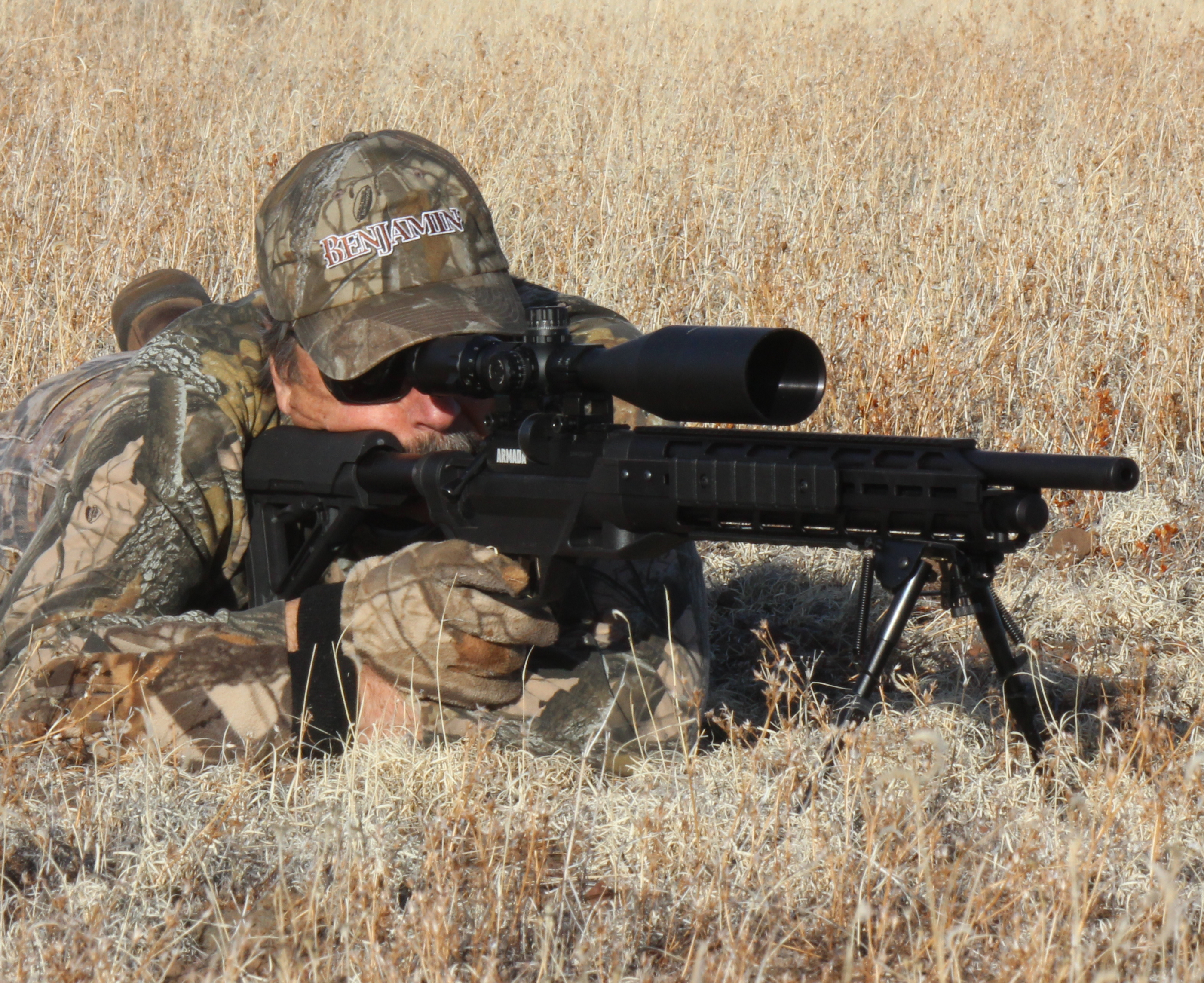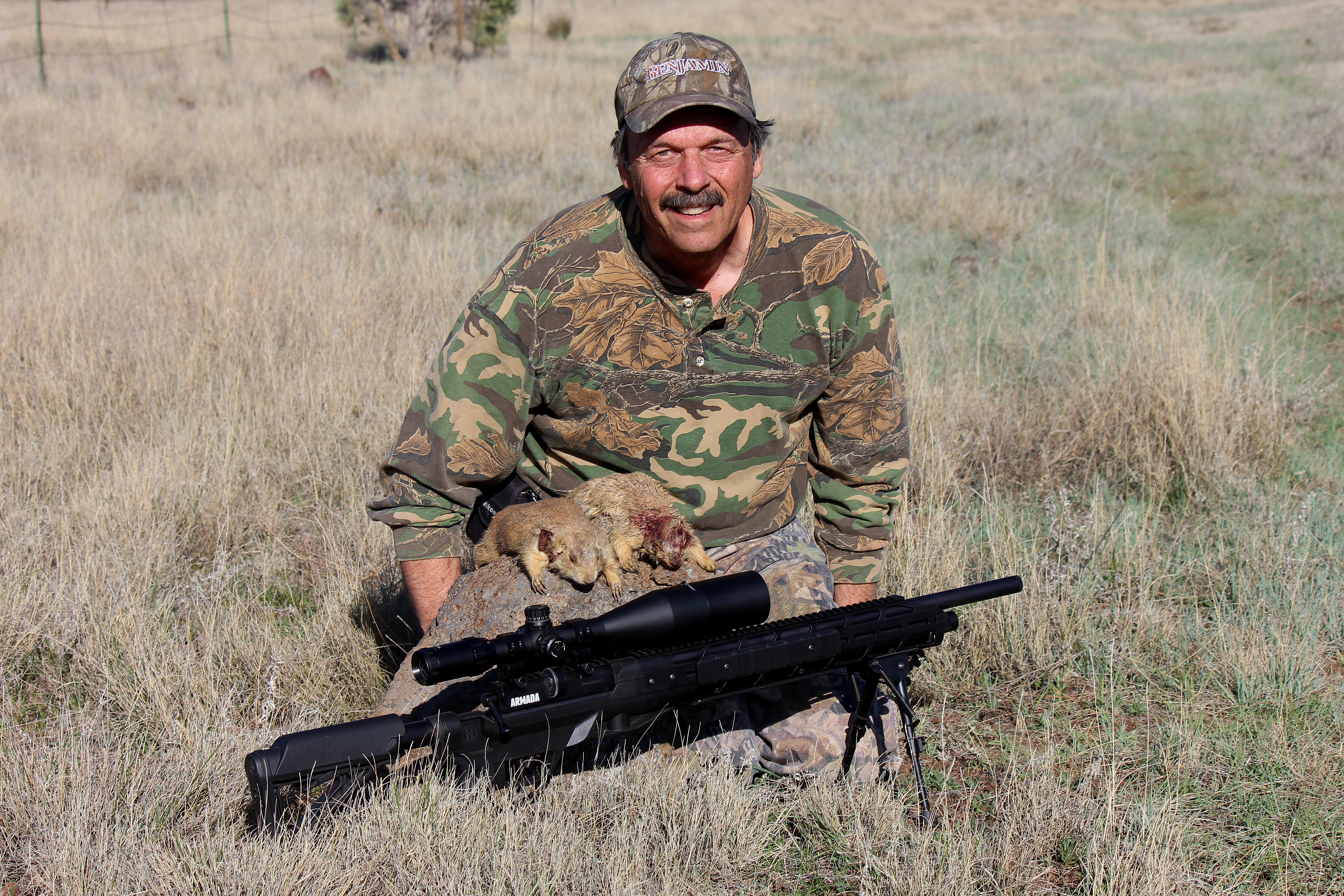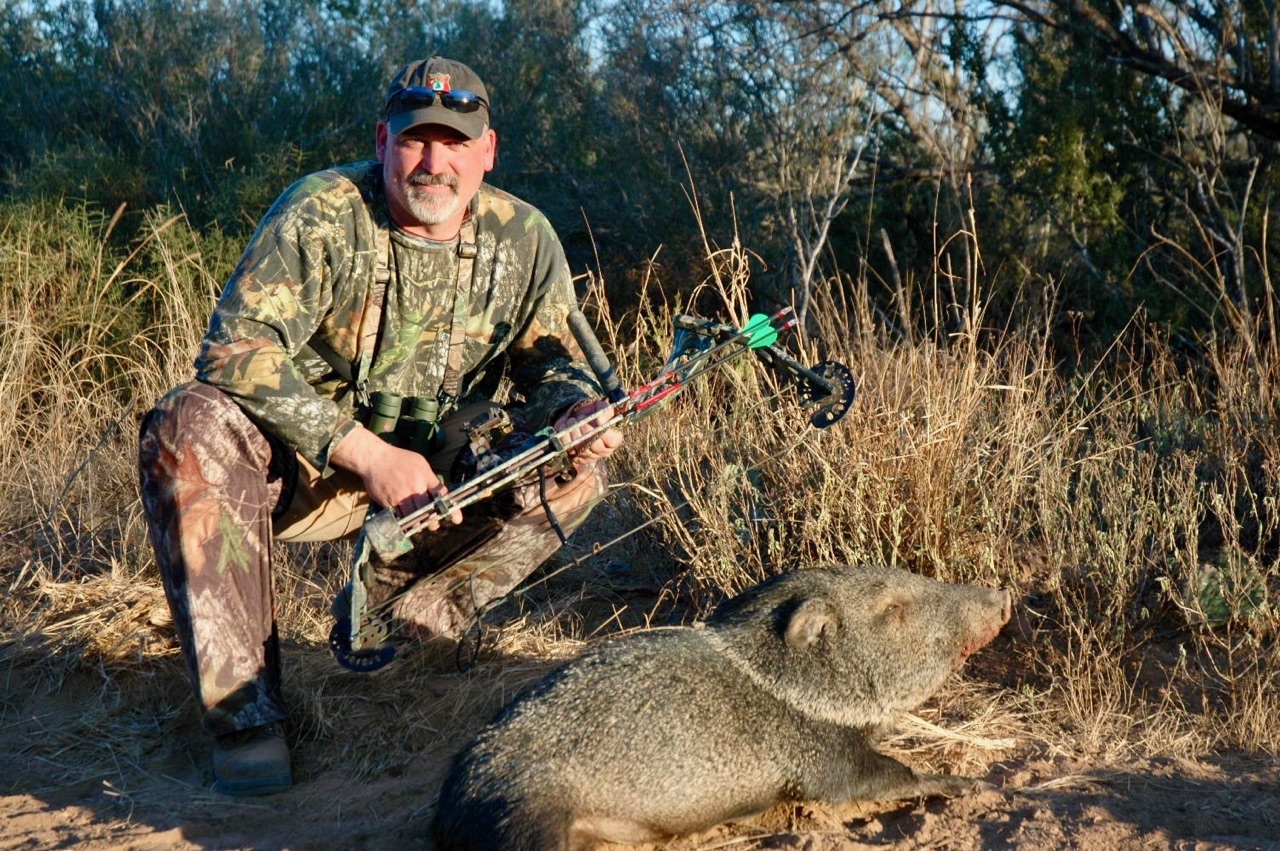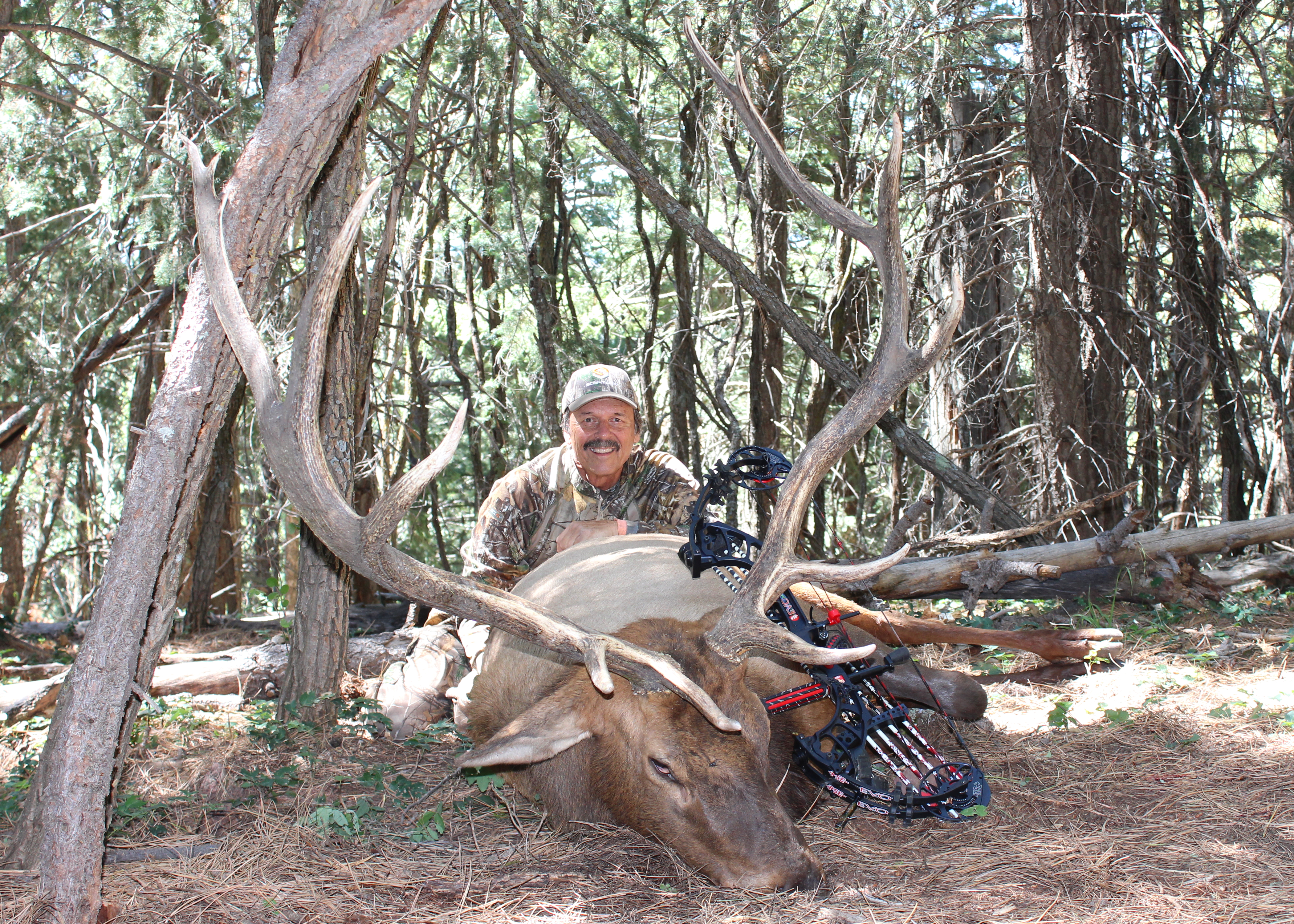Back in July 2013, Arizona implemented the most progressive airgun hunting regulations in the U.S. The regulatory and approval process took nearly two years, with a small group of dedicated airgun enthusiasts leading the effort. Recognizing industry developments and growing interest among hunters, the AZ Game & Fish Commission wanted Arizona to be a national leader in allowing the application of advanced airgun technology in the field. A committee of State Game & Fish Department personnel was formed to study airgun performance. Issues like lethality and safety, and factors like projectile type, kinetic energy, penetration and accuracy were evaluated. Chip Hunnicutt, Marketing Manager with Crosman/Benjamin – a leader in the design and manufacture of airguns and airgun ammo – hooked up with Tony Martins on Day 1 of the 2014 Shot Show for an impromptu interview on Arizona’s new regulations:
At the conclusion of the study period, AZ Commissioners voted 5-0 to approve the following:
- Allow the take of big game animals including pronghorn, deer (mule deer and Coues whitetail), black bear, mountain lion, bighorn sheep (desert and Rocky Mountain) and javelina, but excluding bison and elk, with “big-bore” PCP air rifles .35 caliber and larger, during general (rifle) seasons.
- Allow the take of predators, including coyotes, foxes and skunks and fur-bearing animals, including bobcats, raccoons, weasels, badgers and ringtail cats with PCP air rifles .22 caliber and larger, during general (rifle) seasons.
- Small game (rabbits and squirrels), other animals including coati and Gunnison’s prairie dogs, and birds including Eurasian collared-doves, crows and upland birds (quail, grouse, partridge and pheasant) will continue to be legal for harvest during general seasons with a variety of pneumatic weapons including PCP’s, the popular break-barrel air rifles powered by springs or gas pistons, and the venerable variable pump and CO2 charged air rifles.
Hunting with airguns is not new – Lewis & Clark used a PCP “repeating” air rifle during their famous expedition to explore the northwest in 1803. It’s important to understand however, that this is a close range, precision shooting endeavor. With the performance of big-bore PCP’s comparable to handguns in popular calibers, and an effective range limit of only about 50 yards on big game animals with most air rifles, this hunting discipline has been practiced heretofore by a comparatively small fellowship of extremely dedicated enthusiasts, who understand and embrace the limitations.
Not all airguns are accurate enough, or powerful enough to be used for hunting. In terms of accuracy, the airgun – and the airgun hunter – should be capable of shooting groups of 1-inch or less at the distance that shots at game will be taken. In terms of power, the airgun should generate minimum kinetic energy of 10 foot-pounds to be considered a legitimate hunting weapon. This minimum requirement is adequate for taking animals like rodents, most birds, and small game like squirrels and cottontail rabbits. Larger game requires more energy. For example, the minimum for deer-sized game is considered to be 150 foot-pounds of energy (fpe), while the most powerful big-bore airguns today can generate up to 500 fpe. It’s important to remember however, that hunting with an airgun – any airgun – is all about precise shot placement. Here, Tony Martins cleanly dispatches a prairie dog at 44 yards, testing the new Benjamin Armada Magpul .22 caliber PCP air rifle, which delivers about 30 foot-pounds of energy:
Safety Disclaimer: A skyline shot should never be taken unless you know that it’s safe. Here, a 600-yard long catch basin full of water lies behind the berm where these prairie dogs live.
Airgun hunting is not for everyone. If you decide to give it a try, here’s a little advice: Understand and accept the limited-range capability of your chosen weapon, do your best to get close to each animal you hunt, aim precisely and shoot accurately.








Leave a Comment